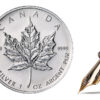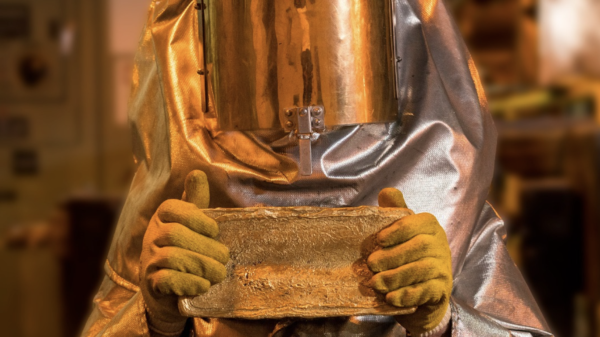Gold’s historic year in 2024 has not necessarily translated into more investment in the Canadian north, as overall exploration spending in the province dipped 14 per cent from 2023 and overall exploration spending targeting gold dropped by 24 per cent, according to a new report from EY Canada.
Natural Resources Canada’s updated data, released last week, presents a varied picture of gold’s meteoric rise on the industry. Preliminary findings suggest gold prices have had mixed or minimal effects on territorial mining activity.
Several provinces increased exploration spending, with Saskatchewan and Newfoundland and Labrador consistently reporting growth. However, exploration spending declined in Yukon, the Northwest Territories, Nunavut, and British Columbia between 2023 and 2024.
“There are a number of factors that play into the level of exploration spend beyond commodity price,” said Iain Thompson, a partner with EY Canada, the consulting firm behind the report.
The Yukon spending dropped by 9 per cent last year despite ranking among Canada’s top producers. The Yukon Geological Survey attributed the decline to ripple effects from the Eagle Gold mine failure.
There’s a lack of certainty in the Yukon, according to Jonas Smith of the Yukon Chamber of Mines. He notes a series of legal challenges regarding projects that have followed the process and still ended up in court. Investors typically look for a streamlined regulatory process, which isn’t presently in the Northwest Territories, according to Karen Costello, with the N.W.T and Nunavut Chamber of Mines.
“The same thing is happening in the Yukon and British Columbia. Their policy intentions have fallen flat and really are not attracting investment despite having great geology,” said Karen Costello.
Read more: Equinox Gold acquires Calibre Mining for $2.6B
Read more: Calibre Mining beats gold guidance for 2024 in Nevada and Nicaragua
Yukon, BC And NWT are updated regulations
The report acknowledged that fluctuations in spending stem from complex economic factors and “different styles of mineralization.”
Furthermore, it also attributed some of the decline to regulations. It cited “difficult” policy conditions in B.C., including land access restrictions, environmental regulations, and permitting delays. Smith and Costello said these same conditions have created challenges in their regions.
“I think holistically, what governments know as well as investors and mining companies know, is that in order to develop resources, it needs to be economically attractive and economically viable,” said Thompson. “And that requires the right environment.”
The Yukon, B.C., and the N.W.T. are updating their mining legislation. The Yukon has not revised its mining laws since the Gold Rush, drawing criticism for failing to consider First Nations sovereignty.
In B.C., new rules taking effect on March 26 will require prospectors to consult First Nations before staking a mineral claim. The Association for Mineral Exploration, which co-authored the report, has strongly opposed the proposed changes.
“If they don’t listen to industry, if they don’t get regulations right, we’re not going to see investment,” said Costello.
Several mining companies have established operations in the Yukon, Nunavut, and the Northwest Territories, capitalizing on the region’s mineral resources.
Banyan Gold Corp (CVE: BYN) (OTCMKTS: BYAGF) is advancing its AurMac project in the Yukon, while Snowline Gold Corp (CVE: SGD) explores its Rogue project. In Nunavut, Agnico Eagle Mines (NYSE: AEM) (TSE: AEM) leads production at the Meliadine and Meadowbank complexes, and B2Gold Corp (TSE: BTO) (NYSEAMERICAN: BTG) is developing the Back River project, formerly owned by Sabina Gold & Silver.
Despite regulatory challenges, these companies continue to explore and develop northern Canada’s vast mineral potential.














